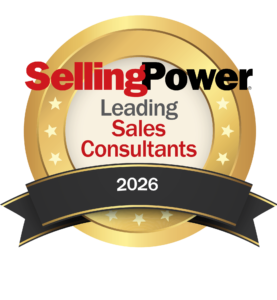Good Growth: Why Sales Enablement Will Emerge as a Revenue Growth Catalyst in 2018

At the Sales Enablement Society Conference in Dallas this past October, Sirius Decisions’ research director Heather Cole shared some extremely eye-opening statistics. The two that really leaped off the page for me?
- 26 percent of sales enablement functions report to CEOs
- High-performing companies are 96 percent more likely to have the function at that elevation.
Said differently: The more elevated and strategic the sales enablement function is, the more productive the sales force.
Elevated Organizations Simplify the Supply Chain behind Sales
In 1869, John Roebling undertook one of the most ambitious engineering projects of his day – building a suspension bridge across the Hudson River. Construction went well until they started laying the base in the middle of the river. Workers were getting extremely sick in the depths of the river. They tried different work combinations, different ethnic groups; no matter what they tried, the workers got sick – 110 of them. This perplexing, invisible problem was delaying progress and driving up costs. It turns out the men were suffering from what Doctor Andrew Smith first termed “caisson disease.” Today, we know it more commonly as either “the bends” or decompression sickness.
Today, most organizations suffer from an equally invisible problem that is even more harmful to productivity – the inefficiency at the point of sale caused by “random acts of sales enablement.” It’s caused by many different people all trying to do the noble thing – create things to help salespeople sell. However, no one is managing all the information or edicts that reach salespeople, so they get overwhelmed with:
- Too much training that isn’t coordinated: One company had 27 different groups supplying some form of “sales training” to sales teams
- Too many materials that don’t map to how they work: It’s not uncommon to uncover salespeople sorting through as many as 5,000 different resources for them
- Policies inconsistent with what they are told: Compensation plans that incent one behavior that doesn’t align with what their managers are asking them to do
- Too much administrative burden: In one extreme case, we’ve found strategic account teams so weighed down with various status reports they only have about 20 percent of the day left to actually talk to clients about buying new things
- Inconsistent messages: Few of the materials or stories reps are provided with are targeted to specific people or written to help a client address a problem
What’s shocking is that this only scratches the surface.
Why Are Random Acts of Sales Enablement So Bad?
What leading companies realize is that, when dealing with people, less is actually more. The current system, where any group can go off and create something to “help sales sell” – without an architecture to be woven into the flow of how salespeople work – creates huge problems:
- It creates tremendous waste. Forrester Research estimates that 15.9 percent of your SG&A is going to support your sales force in one way or another – and these costs are hidden because there isn’t really a way to account for it. These are resources that should be invested in what’s needed to grow.
- It leads to non-value-added conversations. With all the “stuff” available, many reps assume it must be valuable, so they just send it along to buyers – who, without context, get confused.
- It taxes sales time and energy. You want your salespeople doing what they do best – investing their energy to engage with customers. Sorting through tons of material is not only massively time consuming; it drains salespeople who tend to be more introverted.
What Should Your Sales Enablement Department Look Like?
Here are five things you should consider to build an elevated sales enablement department.
- Illuminate the problem. Make a big dramatic case to show the problem. Add up all the hidden costs and show how much is being spent per rep. Then ask, “What do they get for that investment?” Another tactic – print out all the “stuff” available to reps and show the executive team.
- First, cut down the noise. It’s not sexy – and shutting down the random acts won’t be popular internally – but it will help you build a war chest for what really matters and it will be a huge win for your sales force. You will see immediate benefits in cost reductions and then some eventual benefits in productivity as salespeople convert the time available to more selling time.
- Create a baseline to inform decision making. You got in this mess because your management does not have a way to discuss and prioritize initiatives. Model out the current performance and then develop a roadmap of programs based on which are the easiest and most economical to execute.
- Create and sell the plan. Getting buy-in from all the impacted stakeholders and making sure everyone understands the importance of your plan and how they can help is critical to your success. If you don’t get organizational buy-in, you are going to see shadow enablement functions.
- Create and deliver services, not outputs. Define something measurable, like improving the number of meetings for a targeted role by 25 percent within one quarter, and then creating a service that focus on that one goal. This might include identifying all the problems that might prevent that objective from being met (e.g., you don’t have contact information for that role).
Bottom line:
In today’s digital economy, a company must innovate and transform or be disrupted. An elevated sales enablement function helps firms drive change by reducing the amount of noise, creating a model to inform effective resourcing decisions, directing the resources to where they have maximum impact, and helping drive organizational change by managing the information flow to match the skills and comfort zones of the sales force.
Pullquote = Prediction: Sales Enablement Will Emerge as a Revenue Growth Catalyst in 2018.
Get our Enewsletter
Get the latest sales leadership insight, strategies, and best practices delivered weekly to your inbox.
Sign up NOW →